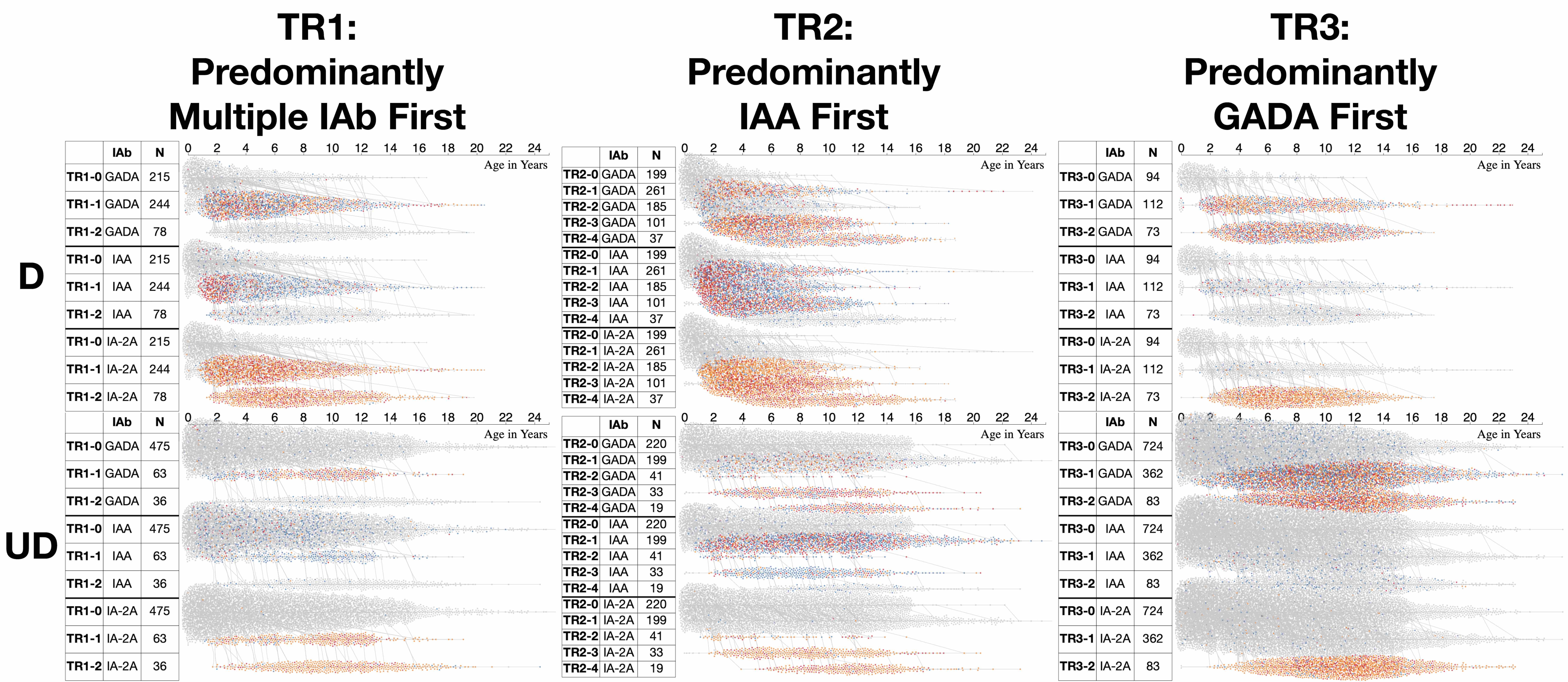 It has long been appreciated that the number of autoantibodies is an important predictor of type 1 diabetes; in this study we further refine the main trajectories using the dynamic patterns of autoantibody levels. Furthermore, these data show that not only positivity for a single IAb observed at an early age but also the IAb level can be used for risk stratification for type 1 diabetes.
It has long been appreciated that the number of autoantibodies is an important predictor of type 1 diabetes; in this study we further refine the main trajectories using the dynamic patterns of autoantibody levels. Furthermore, these data show that not only positivity for a single IAb observed at an early age but also the IAb level can be used for risk stratification for type 1 diabetes.
Abstract
In our previous data-driven analysis of evolving patterns of islet autoantibodies (IAb) against insulin (IAA), GAD (GADA), and islet antigen 2 (IA-2A), we discovered three trajectories, characterized according to multiple IAb (TR1), IAA (TR2), or GADA (TR3) as the first appearing autoantibodies. Here we examined the evolution of IAb levels within these trajectories in 2,145 IAb-positive participants followed from early life and compared those who progressed to type 1 diabetes (n = 643) with those remaining undiagnosed (n = 1,502). With use of thresholds determined by 5-year diabetes risk, four levels were defined for each IAb and overlaid onto each visit. In diagnosed participants, high IAA levels were seen in TR1 and TR2 at ages <3 years, whereas IAA remained at lower levels in the undiagnosed. Proportions of dwell times (total duration of follow-up at a given level) at the four IAb levels differed between the diagnosed and undiagnosed for GADA and IA-2A in all three trajectories (P < 0.001), but for IAA dwell times differed only within TR2 (P < 0.05). Overall, undiagnosed participants more frequently had low IAb levels and later appearance of IAb than diagnosed participants. In conclusion, while it has long been appreciated that the number of autoantibodies is an important predictor of type 1 diabetes, consideration of autoantibody levels within the three autoimmune trajectories improved differentiation of IAb-positive children who progressed to type 1 diabetes from those who did not.